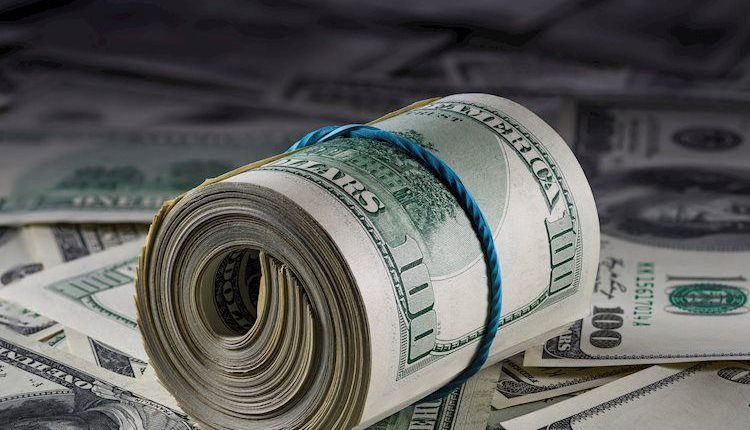- The Greenback was able to print a weekly gain on Friday.
- A lighter week begins with only Retail Sales and Powell’s speech as focal points.
- The US Dollar Index was unable to print a new weekly high and might still reverse.
The US Dollar (USD) is choosing the easy way, sideways, as some geopolitical headlines are making the news on Monday. Not only is Russian President Putin getting involved with the Israelic war in Gaza, but Iran is adding to the tensions. Several headlines came out of the state saying that the time for political solutions is at an end and that an expansion of war is approaching an inevitable stage, seeing Crude prices jump higher, though the US Dollar Index not reacting.
No big data points are scheduled on Monday, so expect fewer sharp moves in the market. One element to keep an eye on is Central Europe, where in Poland saw a big power shift happen on Sunday during elections. One of the opposition parties is set to gain a majority over the ruling party, and the Polish Zloty appreciated by over 1.5% against the Greenback. All Central European currencies, in fact, are up against the Greenback.
Daily digest: US Dollar safe zone for headlines
- US Treasury Secretary Janet Yellen says support for Ukraine remains top priority. Ukraine cannot lose war for economic reasons.
- President of Turkey, Recep Tayyip Erdoğan, said to British Prime Minister Richie Sunak that Western countries shoudl refrain form provocative acts regarding Israeli-Palestinian conflict.
- The New York Empire State Manufacturing Index for October has moved from 1.90 previous to -4.6. Less negative than the expectation of -7.00.
- The US Treasury is set to issue a few auctions with a 3-month and a 6-month bill auction at 15:30 GMT.
- To round up the calm Monday, expect to see comments from Patrick Harker from the Federal Reserve of Philadelphia at 20:30 GMT.
- Equities are sliding lower with the Japanese Nikkei down over 2%. The Chinese Shanghai Shenzhen Composite slides over 1%. Meanwhile, European equities are rallying higher on that pro-European opposition in Poland set to claim victory in the Polish elections. US futures are taking over the sentiment and are soaring by 1% on average.
- The CME Group’s FedWatch Tool shows that markets are pricing in a 90.2% chance that the Federal Reserve will keep interest rates unchanged at its meeting in November.
- The benchmark 10-year US Treasury yield soared to 4.70% and is ticking up a touch this Monday.
US Dollar Index technical analysis: DXY is the quiet spot this Monday
The US Dollar might be popping back into its normal regime from the past few months by overtaking the summer rally trendline. Do not pop the champagne just yet though as no weekly high got printed. Meanwhile, the US Dollar Index (DXY) this Monday is opening below the closing price from Friday, which could point to some selling and might see the DXY fade lower in search of support.
A bounce above the daily trendline from July 18 might still materialise. On the topside, 107.19 is important to reach if the DXY can get a daily close above that level. If this is the case, 109.30 is the next level to watch.
On the downside, the recent resistance at 105.88 did not do a good job supporting any downturn. Instead, look for 105.12 to keep the DXY above 105.00. If that does not do the trick, 104.33 will be the best level to look for some resurgence in US Dollar strength with the 55-day Simple Moving Average (SMA) as a support level.
Interest rates FAQs
Interest rates are charged by financial institutions on loans to borrowers and are paid as interest to savers and depositors. They are influenced by base lending rates, which are set by central banks in response to changes in the economy. Central banks normally have a mandate to ensure price stability, which in most cases means targeting a core inflation rate of around 2%.
If inflation falls below target the central bank may cut base lending rates, with a view to stimulating lending and boosting the economy. If inflation rises substantially above 2% it normally results in the central bank raising base lending rates in an attempt to lower inflation.
Higher interest rates generally help strengthen a country’s currency as they make it a more attractive place for global investors to park their money.
Higher interest rates overall weigh on the price of Gold because they increase the opportunity cost of holding Gold instead of investing in an interest-bearing asset or placing cash in the bank.
If interest rates are high that usually pushes up the price of the US Dollar (USD), and since Gold is priced in Dollars, this has the effect of lowering the price of Gold.
The Fed funds rate is the overnight rate at which US banks lend to each other. It is the oft-quoted headline rate set by the Federal Reserve at its FOMC meetings. It is set as a range, for example 4.75%-5.00%, though the upper limit (in that case 5.00%) is the quoted figure.
Market expectations for future Fed funds rate are tracked by the CME FedWatch tool, which shapes how many financial markets behave in anticipation of future Federal Reserve monetary policy decisions.
Read the full article here

